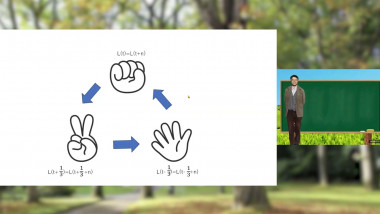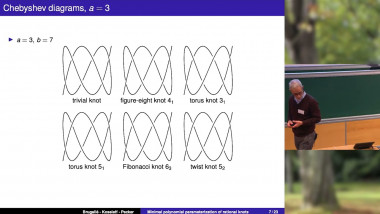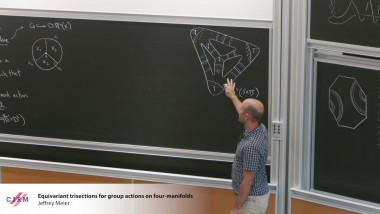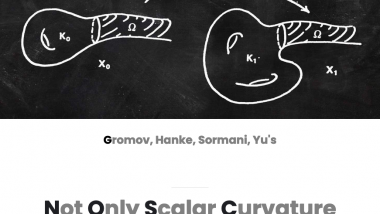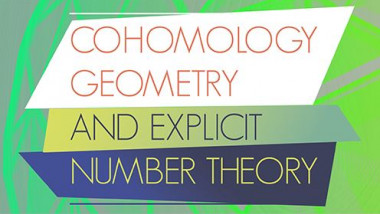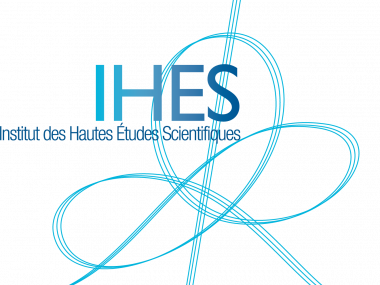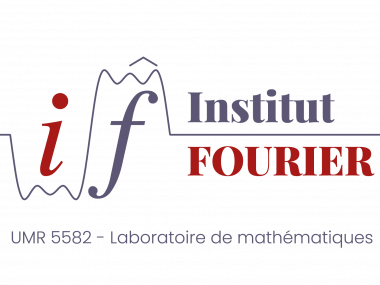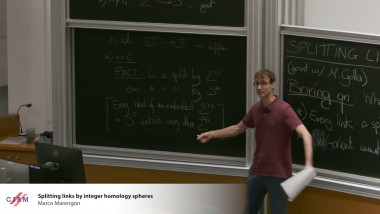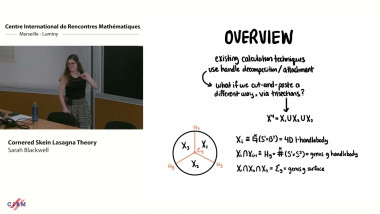Appears in collection : 2025 - T2 - WS2 - Low-dimensional phenomena: geometry and dynamics
Roughly speaking, a complete real hyperbolic manifold is geometrically finite if its convex core is the union of a compact set and finitely many ends that are isometric to ends of manifolds with elementary parabolic holonomy. This notion admits many different characterizations, and has been generalized to much broader settings such as rank-one symmetric spaces, Hadamard manifolds, or even convergence group actions.
A decade ago, Crampon and Marquis extended this notion to (strictly) convex (real) projective geometry. A domain in the real projective space is properly convex if it is contained in some affine chart, where it is bounded and convex.
Crampon--Marquis introduced two distinct notions geometrical finiteness for quotients of convex domain that are round, i.e. strictly convex with differentiable boundary. One notion is more restrictive than the other, and they proved that most of the usual characterizations of geometrical finiteness are equivalent to their strong definition. Unfortunately a mistake slipped into the proof and the situation is more complex than expected, hence more interesting.
We will review their work, evoke the link with relative Anosov groups through work of Zhu--Zimmer and Fléchelles, and see an example in $\mathrm{SL}(5,\mathbb R)$ where the finite volume characterization of geometrical finiteness fails.
